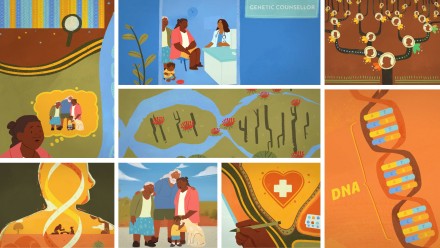Research that matters

Genomics is at the heart of new discoveries and technologies that are transforming medical practice.
Turning data into knowledge
The potential is to find treatments and preventative strategies that actually work
The ability to leverage genomic information to help individuals depends on having – in the background – an accurate reference for comparison. It is not so much a case of asking "what is normal?", but of asking (in the medical setting, at least) "what is different about this person that might be causing their illness?".
That question can only be answered by comparing their genomic information to a standardised reference, called a reference genome.
NCIG is creating one of the first Indigenous Australian reference genomes, and when complete it will encompass a remarkable depth and breadth of information.
Australia's geography is a significant factor. Our continent's long history of human occupation and its large land area have led to substantial regional differences among its Indigenous Peoples (genomically speaking, that is). This high degree of regional differentiation implies that a reference genome drawn from a single person, or only a small number of people, will not provide sufficient reflection of the genomic variation across Australia.
NCIG is building its reference genome from the samples of geographically dispersed Indigenous Australians.
Furthermore, the depth (detail) of the reference genome will be improved by including the genomes of many people rather than few. Already, consent for the sequencing of their DNA has been given by more than 500 Indigenous Australians, with a program in place to continue well beyond this number. From a genomic perspective, 500 genomes (and counting) is a rich resource.





